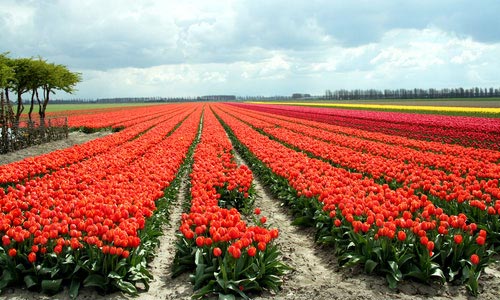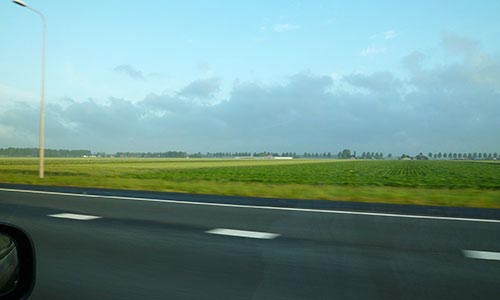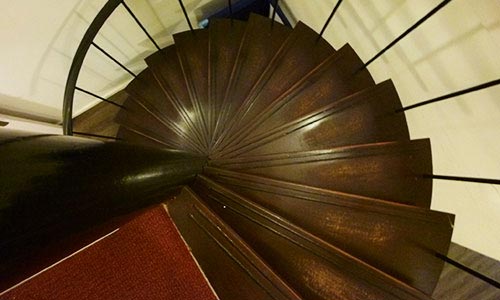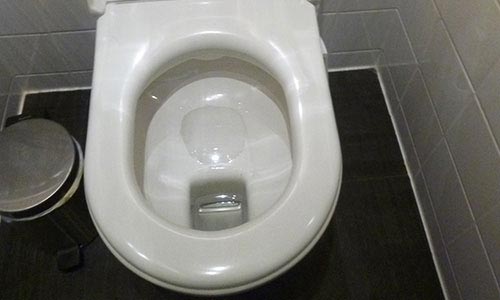This is the last part of a 7-part series on Holland (The Netherlands), including traveling to Holland, the Dutch culture, Dutch lifestyle, Dutch environment and essential things to know about the country.
- Part 1: Introduction & Basic Information about Holland
- Part 2: Traveling to Holland: Visa Preparation and Climate
- Part 3: The Dutch Culture, Part 1
- Part 4: The Dutch Culture, Part 2
- Part 5: Living in Holland: Cost of Living and Hobbies
- Part 6: Traveling in Holland: Land of Bicycles, Public Transport and Going to Other EU Countries
- Part 7: 22 Random Facts About Holland
In this last part of the series, I’ll round off with a random trivia about Holland – things that didn’t fit in first 6 parts of the series. Some are good-to-know information, while some will be essential for your visit.
- Tulips are commonly associated with Holland, even though they originated from Ottoman Empire (Turkey). That’s because they are grown all over the country! If you want to see tulips, visit Holland between April 25 – May 5 – it’s the peak blooming period. It varies a little from year to year. (from Growing Tulips)

(Image)
- Flatland. Much of the land in Holland is flat. About 25% of its area and 21% of its population are located below sea level, and 50% of its land lies less than 1 meter above sea level. This distinct feature contributes to Holland’s name in many other European languages. (i.e. French: Les Pays-Bas and Spanish: Los Paises Bajos, literally means “The Low Countries”). (from the Netherlands wiki page)

View from the taxi, after leaving Amsterdam Airport Schiphol
- Dikes. Due to the flat land, about two-thirds of Holland is vulnerable to flooding. Hence, flood control is an important priority in Holland. River dikes prevent flooding from water flowing into the country, while a complicated system of drainage ditches, canals and pumping stations (historically: windmills) keep the low lying parts dry for habitation and agriculture. (from Flood Control in the Netherlands)

One of the many dikes/ditches in Holland

If there were no dikes, a large part of Holland would be submerged today (Image)
- Windmills are a beloved symbol of the country. The windmills literally built the country – without them, a lot of the water and land drainage would not have occurred, and the landscape of Holland would be very different today. Watch: Windmills in Holland.

A windmill in Laren, Gooi (city)

Full shot of the windmill
- Dutch Clouds. There’s something about the Dutch clouds that makes them incredibly charming. Many times they look “unreal,” like they were lifted out of a painting – like I can just ride on them and float away. ♥

View from outside the window of my home in Amsterdam

At Dom Tower of Utrecht, in Utrecht

At Dam Square in Amsterdam Central. Check out the beautiful clouds and blue sky!!
- Wooden Clogs. The Dutch have been wearing wooden shoes, or clogs, or “Klompen” since medieval times. They eventually became symbols of the Dutch culture. Today, everyone wears normal leather shoes while Dutch clogs have become a beloved tourist souvenir.

Souvenir shop in Amsterdam Central selling wooden clogs
- Land of Bicycles. Holland is also known as the Land of Bicycles. Everyone cycles here; There are cycling tracks and bicycle stands everywhere. Everyone knows how to cycle, and everyone owns an average of 2-3 bicycles. Read more in Part-6: Traveling in Holland
- Liberalness. Holland is considered a liberal country. Soft drugs like weed are allowed, while there is a large, thriving red light district at Amsterdam Central. Gays are also open about their sexuality, with most coming out of the closet when they reach 16.
- Directness. The Dutch have a reputation for being direct, to the point of coming across as rude in other cultures. However, I beg to differ, as I shared in The Dutch Culture, Part 2.
- “Go Dutch”. The term “Go Dutch” came about because in the Netherlands, it’s not unusual for couples to split the bill when dating. There are 2 reasons for that. Firstly, gender equality is a big thing there. Males and females are seen to play an equal role when it comes to a relationship. Secondly, the Dutch have a reputation for being thrifty – hence a preference to split the bill vs. giving treats. I’ve to say that in my time in Holland though, I found this to be untrue – many of my Dutch friends treated me repeatedly despite not needing to do so. Thrifty yes, but they’re definitely not miserly as they’ve been made out to be.
- 4 Seasons. Holland experiences 4 seasons – Spring, Summer, Autumn, Winter. In summer, the days can go as long as 17 hours; While in winter, days can be as short as just 8 hours! Read more in Part-2: Climate in Holland
- The Dutch language is quite similar to German. Hence, many Dutch can understand the German language too. However, most Dutch dislike it if you try to compare them or their language with the Germans’ – they see them as distinct and separate.
- The ground floor is referred to as level 0, while subsequent floors are numbered 1, 2, and so on. In Asia, the ground floor is referred to level 1. Next level up is level 2, level 3, etc.

- There is not really a nightlife in Holland, especially when compared to countries like SG/HK where 24-hour shops are a commonality, and late night shopping is a norm. Most cafes/shops/stores close at about 7-8pm, while bars/pubs close 12-1am. Trams and trains stop operating at about midnight. Occasionally there are shops that close at 3 am, but these require special licenses to operate.
- Power plugs. Holland uses 2-pin power plugs shaped like below. Be sure to get a travel adapter before you come over.

- Be sure to bring your own bags when shopping at supermarkets like Albert Heijn, as they only provide small plastic bags. Large ones cost $0.25 Euros a piece.
- There are many parks and street benches in Holland, more so than other places I’ve been in Asia. And many people do chill out there! This is because of the culture of “Gezellig” in Holland – personal wellness and well being is highly valued here. People do not work to death here, but rather take time out to relax and enjoy the little moments in life.
- It’s usually cloudy here – the only times when one sees the sun is during the summer season. Hence, the Dutch love to sit out and sunbathe when the sun is out!
- Holland is known for narrow staircases. So much so that when furniture needs to be moved beyond the ground floor, they’re hoisted outside of the window and onto lifting beams, rather than via the stairs!
Read: When the Stairs are too Narrow…

- Traditional Dutch houses do not have ceiling lights. Rather, they use lamps, which are considered more homely and “gezellig“.
- Most Dutch children move out of their parents’ home when they are 18, as a mark of independence. Those who don’t are seen as weird. In Asia, children usually only move out when they are getting married and setting up their own family.
- High ceilings. Traditional Dutch homes have very high ceilings.
- Dutch toilet. To add to the randomness of this collection of random facts – In the traditional Dutch toilet, the toilet hole is situated towards the edge of the seat, rather than center. 2 reasons: (1) It’s to let you inspect your “deposits”, for health reasons (2) It uses less water, which is in line with the Dutch style as they are always keen on energy efficient ideas (think windmills). Read more: An Old Fashioned Dutch Convenience

Conclusion
That’s it for the Holland travel series. :D In short, if you can’t already tell by now (what have you been reading all this while?!?), I love Holland, and I especially love Amsterdam, which is where I stayed at for the majority of my Holland trip.
As I’m writing this, I’m still in Amsterdam. I’m thinking of going to Paris or Germany next week, where I expect new adventures. I might return to Amsterdam at the end of my EU trip, depending on how things go.
The trip is going so well that I think I may well extend it beyond 3 months and make it a world trip. :D After all, I do not need to be in Singapore in the immediate future – I can work anywhere around the world since what I do isn’t geographically bound. And since I’m already in EU, I might as well make use of the opportunity and visit as many places as I can – including the States!
Just a few days ago, I asked if anyone from the US would like to house me if I do visit the states. To be honest, I posted it as a half casual, half serious question – and was half expecting no one to reply.
But so many of you guys replied with gracious offers to have me as a guest in your place – including those of you in Europe and Asia! Words can’t express how touched I feel. Whether the plans come to fruition or not, it touches me that you deem our connection as true and real enough to have me in your abode. From the bottom of my heart, I’d like to thank you. Truly, thank you. I’ve always seen all of you as a part of me, a part of my life – even if we may never have met before. The depth of our connection is made more real than ever with this world trip.
This is the last part of a 7-part series on Holland (The Netherlands), including traveling to Holland, the Dutch culture, Dutch lifestyle, Dutch environment and essential things to know about the country.
- Part 1: Introduction & Basic Information about Holland
- Part 2: Traveling to Holland: Visa Preparation and Climate
- Part 3: The Dutch Culture, Part 1
- Part 4: The Dutch Culture, Part 2
- Part 5: Living in Holland: Cost of Living and Hobbies
- Part 6: Traveling in Holland: Land of Bicycles, Public Transport and Going to Other EU Countries
- Part 7: 22 Random Facts About Holland
(Images: Personal Excellence)







 If you like my articles, join my community of 65,000 readers and get my latest articles delivered to your inbox. Your email is safe. 100% no spam.
If you like my articles, join my community of 65,000 readers and get my latest articles delivered to your inbox. Your email is safe. 100% no spam.
Celes, thank you so very much. You have picked up information which is on the first glance so trivial, yet so unique to this nation. And there purpose speaks volumes about their efforts. Hats of to you and to the Dutch people. To you, for sharing without filters and to Dutch people, for showing how we can co-exist in this world by taking steps which are small individually, but giant collectively.
God bless you Celes. Oh yes, one last bit. Any time you plan a trip to India, Mumbai, you are more than welcome to come and break bread with my family. it would be our pleasure and honour to take you around our country. Till then happy living. Parikshit
Thank you Parikshit! :) Thank you for being unbiased in reading about the Dutch culture and being accepting of what it’s about. Thanks for the suggestion about India – it’s a great idea! I just added it to my list of places to visit in my world trip.
I’ve enjoyed this Holland travel series so much!
I added ‘To do kite surfing’ in my bucket list after reading your post.
It seems extremely thrilling!!
And I’ll refer your tips for reducing diner wasting ,When I go to EU in next year.
So I linked it in my face book page.
Your trip story made me feel like as if we’re traveling together.
Thanks Celes.
Hope you have great, precious time in next country! :heart:
Thank you Min! :D Next country is probably going to be Germany. I’ll be sure to post updates in real time on Facebook and subsequently on the blog. I really appreciate your support and kind words!
Not sure who told you that we don’t have any nightlife? Most bars/cafes are open till 3AM every day. In Amsterdam/Utrecht you also have bars who are open till 6AM.
I didn’t say there’s no nightlife, but that there’s not really a night life (on an overall societal/country level) compared to countries like Singapore/HK where there are many 24 hour shops, and even late night shopping in Singapore (till midnight). In general, most shops in SG/HK close at 10-10:30pm on average while in Holland, they close at about 6-8pm (earlier on weekends). Streets are usually quiet already by then too. Regarding bars, all the bars I’ve been to in Amsterdam so far close at 12am, which I understand from my Dutch friends is the norm. But I’m sure there are bars that close at 3-6am too which I’ve not been to.
Hey!!! Wow sounds amazing to have so much freedom that you can travel the world and still generate income! I love it. Really enjoying hearing about your travels! Have fun and take care xxxxx
The toilets and power plugs are the same here in Hungary too :) We also have those beautiful “puffy” clouds from spring to autumn. They’re perfect for taking photos :))
Tell me about it!! :D They look like they were lifted out of a painting!
I forgot to add, since dutch klompen (wooden clogs) have proved to be centuries old very efficient footwear in soggy or muddy conditions, they are still very much worn on farms and on fishing docks… the people who wear them daily have the insides of theirs custom made so they fit really really comfortably. The mass produced tourist ones on the other hand can be rather uncomfortable because they are not custom carved on the inside and will give you blisters pretty quickly.
in our region (overijssel) klompen (wooden clogs) are very common an worn by farmers and even my 2 year old son has his own clogs.
The dutch skies are famous and one painter Ruisdaal has painted many dutch skies http://nl.wikipedia.org/wiki/Jacob_Isaacksz._van_Ruisdael
Thanks to the link to my blog post on steep staircases,moving furniture etc , I can also add that if you want to know more about old fashioned Dutch toilets and why they were made like that, I wrote a blog post about our one here: http://kiwidutch.wordpress.com/2010/03/20/new-post-47/
Thanks Kiwidutch! Very informative. I’ve included a link to your post in the bullet point about the toilet. :)
Thanks for this series Celes. It was like reading a travel guide at the book store! Great photos as well.
Commenting for this post is closed.